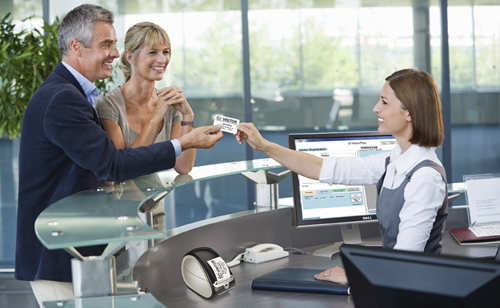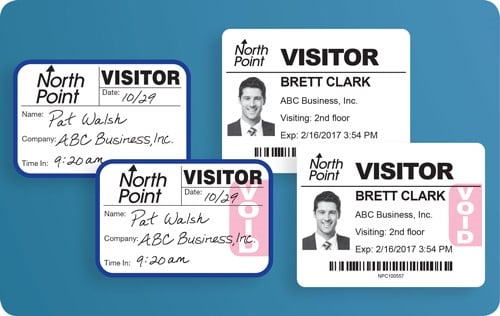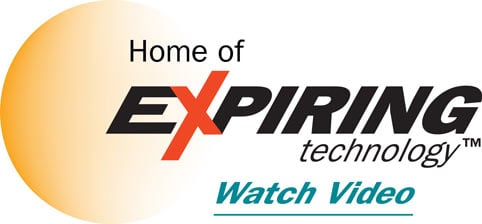Blog
6 mistakes when using an
Electronic Visitor Management System
by Paul Kazlauskas

When an entrance to an office building, healthcare facility, or school isn’t secure, the facility is vulnerable and ultimately could be liable if something bad happens as a result of negligence. A great way to help secure a facility’s entrance is to use a visitor management system (VMS) to document all visitors. Once the software is set up and in-use, you’ll enjoy the many benefits of the system, such as quick and easy sign-in, secure identification, reliable data access, and convenient reporting.
In order to utilize the full benefits of the visitor management software, you’ll want to steer clear of these worst practices for using an electronic visitor management system. In addition to identifying the bad practices, please also see our ideas for improving the facility security in each circumstance.
1) Not having the visitor management system close to the main entrance. Most likely, visitors are coming through a single entrance to your facility. When they get in the front door, they should immediately see the visitor management system with signage about what is expected during their visit. Having the visitor management system out of view would be confusing and inefficient.
2) Not documenting every visitor. Every guest, contractor, vendor, parent, relative, friend, delivery person, or potential new hire that comes to your building should be documented in a visitor management system. It doesn’t matter if the same visitor comes so often that the front desk receptionist knows the person by name. Every visitor should be documented. The reason isn’t always because the front desk receptionist doesn’t know the visitor. For example, if there was an immediate need to evacuate the building, it would be important to know who was in the building at the time. A VMS can do this for you.
3) Failing to use a driver’s license scanner. Hand-keying the visitor’s information has the potential for human errors and takes too much time. While not impossible to do, why not make the process foolproof by using a driver’s license reader, so critical fields aren’t missing and everything is spelled correctly? In addition, some scanners even capture the photo from the license, which adds to the facility security.
4) Not capturing additional information about the visit beyond the driver’s license. Scanning a license captures a lot of important information about the visitor to your facility. However, who are they there to see? What company are they from? What time did the visitor arrive? What part of the building are they going to? It is possible to document all these things on a visitor badge (and the corresponding visitor reports) so more information is known about a visitor beyond who they are.
5) Failing to print a visitor badge to wear while at the facility. Capturing driver’s license data and the particulars about a visit are great for knowing who is in your facility at any given time and for what reason. What about for the employees in the facility who don‘t recognize the visitor? Especially in larger facilities, it is difficult to know everyone who works for a particular company, healthcare facility, or school. If an employee sees a stranger who is not wearing a visitor badge, they may wonder who they are and what they are doing there. At best, not identifying visitors arouses employees’ curiosity and, at worst, leaves people and property exposed to potential harm. A custom-printed visitor badge, that includes a photo, clearly identifies the visitor.
6) Ignoring the reports available for visitor data. A major reason why a computerized VMS is an upgrade over manual sign-in books is the ability to analyze visitor data electronically. There is complete data on every visitor that has ever been to a facility, and that data can be mined to identify trends. Most visitor management systems have the ability to generate custom reports and allow them to be shared with security personnel very easily. Besides the obvious security reasons for knowing who is in the building at any given time, there are other non-security benefits for the visitor data. For example, visitor reports can be generated on outside contractors to verify arrival and departure times to ensure they have been on the job as invoiced.
Visitor management systems could seem complicated at first, but most companies that sell them offer training and support to get you started. It is important to get the most security out of your purchase as you can. If you don’t know how to properly utilize all the features or plan for their implementation accordingly, visitor management systems will essentially be expensive toys that provide no actual security benefit.
What are other examples of the incorrect ways to use an electronic visitor management system? Please feel free to add your thoughts in the “Comments” section below.
Want the latest, best security practices delivered straight to your inbox? Click the “Subscribe to the Blog" button (on the left side navigation).
Our visitor badges “VOID” overnight to prevent reuse. 
See them for yourself — request free samples!
Posted on 1/17/2017



 Paul Kazlauskas
Paul Kazlauskas
 Andrew Jones
Andrew Jones